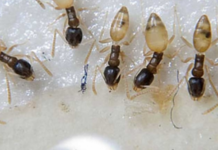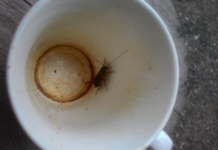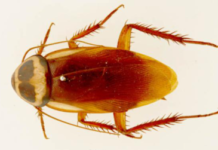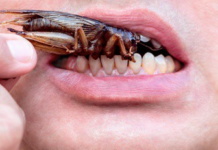You would think that bed bugs are only found in the bedroom. As the name suggests, bed bugs are pests commonly known to reside in the bedroom. But you can also find bed bugs in your curtains. Do bed bugs live in curtains? Understand more in this post why it is possible for bed bugs to live in curtains and ways to get rid of bed bugs in curtains.

A bed bug infestation is in most cases limited just in your bedroom. Bed bugs are only interested in sucking your blood. They know where to find and the right to attack. Your bedroom and especially at night offers a perfect time for them to feed.
Think of it! Can bed bugs be found living in curtains? Surprisingly, bed bugs can also live in curtains. Bed bugs don’t have wing, they cannot fly. They will reach your curtains by crawling near the wall close to the curtain.
Although curtains are not a bed bug’s preferred place for living it is not unusual to find a few bed bugs there. Bed bugs tend to prefer dark environment making the curtains especially behind the window an ideal spot to hide.
Do Bed Bugs Like Curtains?
Bed bugs infest your home for one primary reason; to feed on human blood. But to achieve this they have to place themselves somewhere strategic. A place where you can hardly spot them. They need to be near you so that they can feed. This is why bed bugs are mostly found in the bedroom than any other place.
Bed bugs do live in curtains. This is so common in hotels where other than the common places such as the mattress, bed frame and sofas, you will find a few bed bugs hiding in the curtains. This is according to the Journal of Travel Medicine
You are also likely to find bed bugs in places such as furniture, drawers, behind the head of the bed, behind the baseboard etc.
Although bed bugs rarely pick the curtains as their first place of infestation. When they do, there isn’t much of choice you got.
How Do Bed Bugs Get in Curtains?
You know that bed bugs don’t have wings which implies that they cannot fly. They are good at climbing though. Bed bugs can climbs walls and fabrics. So, they only way bed bugs can get to your curtains is through climbing the walls and curtains.
If bed bugs are hiding in your carpet or furniture close to the wall, they will use this to get to your curtains. It is much easier for them to climb and hide in the curtains. This happens when you already have an infestation of bed bugs in your home and the curtains becomes their secondary hiding place. They do this at night since they bugs are afraid of light and cannot move unless it is dark. But if a bed bug is exposed it will run and try to hide somewhere dark.
Why Do Bed Bugs Hide in Curtains?
Bed bugs will hide and live in places where their host sleep. Usually, they tend to lay eggs where their source of food is near. There has to be a reason why bed bugs are likely to be found in curtains.
If bed bugs are living in your curtains, it implies that the curtains have been still for longer periods. This happens a lot where it takes times before one can change or even wash their curtains.
A female bed bug once it has been mated it tend to find a new territory. This wandering of the female bed bug looking for places where it can lay eggs may lead them to your curtains. Your curtain may provide a perfect living condition for the bed bugs to reproduce and before you know you already have an infestation in your curtains.
Is it Possible for Bed Bugs to Lay Eggs in Curtains?
As mentioned earlier in the post, bed bugs prefer to hide in dark environment and close to their host for food. The curtains in your bedroom window or living room could also offer a perfect living condition for the bed bugs. This happens in case where the mattress and box spring are already infested.
Do bed bugs lay eggs in curtains? The female bed bug always tend to find a perfect surrounding to lay eggs. This happens as soon as mating is done. So it move in search of a new territory to lay the eggs. This search always ends in a dark and somewhere secluded where there will be no disturbance.
This means the female will pick a place where no other bed bugs are living. The search could end in curtains usually the drapes are the perfect material for laying eggs. Note, when a female lays eggs, it uses a kind of natural glue to keep them eggs secured and tightly held with the fabrics.
Is it Possible for Bed Bugs to Live in Net Curtains?
Regardless of the material and the kind of curtain, bed bugs will hide and infest in places they feel secure and close to their host. It is possible to find bed bugs infest any kind of fabrics including the net curtains.
Bed bugs would still hide in net curtains. But the fact that net curtains allows light through, there is a highly possibly they will move and find somewhere completely darker. So net curtains aren’t ideal for bed bugs to infest.
Can You Find Bed Bug Fecal Matter on Shower Curtains?
A shower curtain somehow is different from the normal curtains. A shower curtain isn’t made of fabric but plastic. It is quite difficult for bed bugs to climb a shower curtain unlike the smooth normal curtains.
It is also rare to find bed bugs in a shower. Bed bugs are not fond of water neither do they drink water. Bed bugs would prefer somewhere drier. Finally, bed bugs will infest areas close to their host usually in the bedroom or at times in the living room.
It is less likely to find bed bug fecal matter in the bathroom. So, if see some darks spots on shower curtains, those are not bed bug fecal matter but it could be mold or fecal matter of other bugs.
How to Get Rid of Be Bugs in Curtains

A bed bug infestation can easily and effectively be eliminated by professional exterminators. However, you may want to try if think the issue doesn’t warrant a professional pest control expert.
Here are a few ways to get rid of bed bugs in curtains:
a) Vacuum Cleaner
Once you notice that there are bed bugs in curtains, use a vacuum cleaner to eliminate them. A vacuum cleaner will not only get rid of bed bugs but also their eggs. Immediately dispose them off with a vacuum cleaner bag.
b) Launder Your Curtains
To kill bed bugs effectively in curtains, laundering is the easiest and simplest thing to do. Make sure you use hot water to wash the curtains and a good detergent. Bed bugs cannot tolerate heat and the detergent is toxic to them.
Here’s how to effectively get rid of bed bugs when laundering your curtains
- Tightly seal the curtains in a plastic bag
- Take the bag to the washing and put inside a washing machine
- Wash them
- Hang the curtains facing the sunlight directly to kill all the bed bugs
Use a dryer to dry the curtains. This is to make sure any surviving bed bug is killed with the heat from the dryer.
c) Cold Treatment Method
You can effectively get rid of bed bugs in curtains with cold temperature method. But be careful before trying out this method. Understand the type of fabric your curtains are made of otherwise you’ll end ruining the curtains.
Cold temperature tend to freeze the bed bugs to death. You can keep the curtains in a freezer at temperature of 0 degrees Fahrenheit for a couple of days to ensure that all the bed bugs are dead.
How to Get Rid of Bed Bug Fecal Stains on Curtain
Other than eliminating bed bugs in your curtains, you may notice in some cases there are dark spot on the curtains. How do you get rid of the stains on your curtains? First, understanding the type of fabric your curtains are made of is important. This will determine whether you will put them in a washing machine or not.
Here is a quick on how to get rid of the fecal stains in your curtains:
Read the washing instructions on the curtains
This is a key step before doing anything else. The washing instructions are usually indicated on the curtain tag.
Use Soap and Enzyme Cleaner
- Before washing the curtains,
- Use a cloth soaked with cold water to blot any stains on the curtain.
- Spray the stains with an enzyme stain remover
- Leave the stain remover on the fabric for the recommended time indicated on the bottle
Best Laundry Stain & Odor Remover

Launder the Curtains in a washing Machine
The final procedure is to place the curtains in washing machine preferably in a cold temperature setting.






